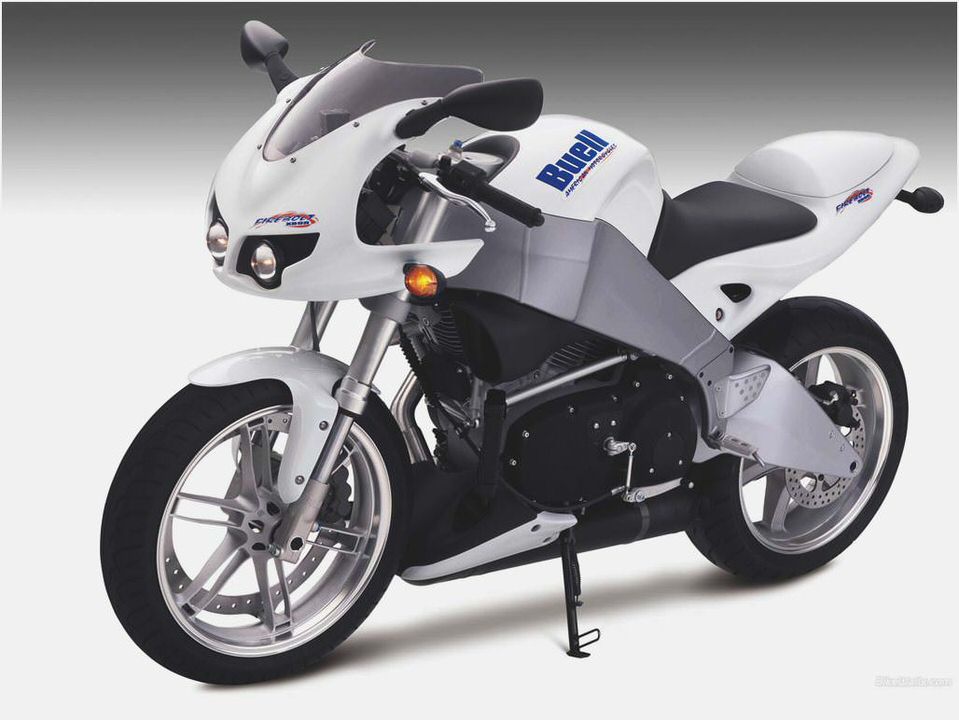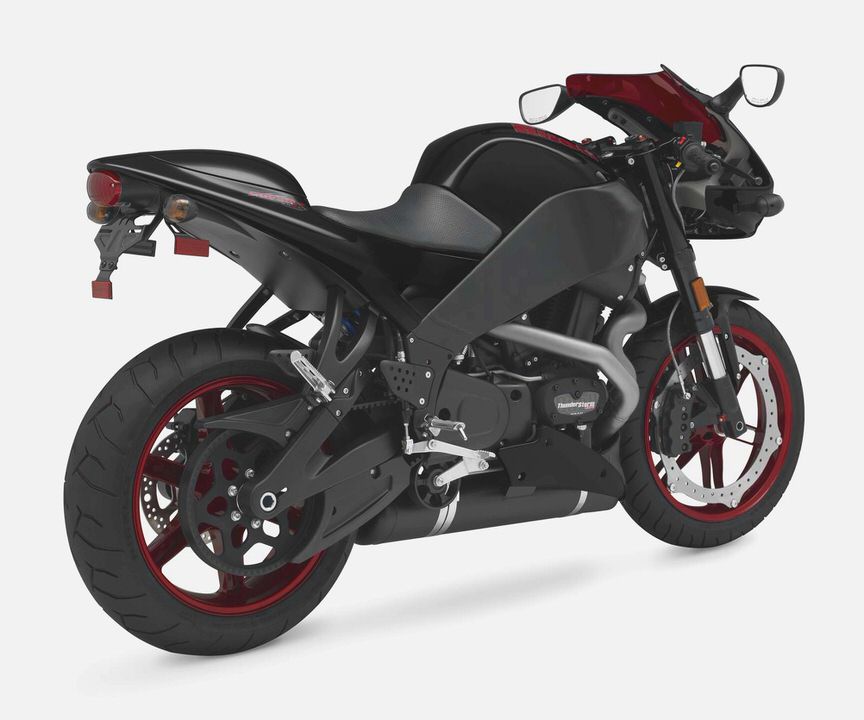
Buell Firebolt XB9R NZ 2002 Review
Buell Firebolt XB9R NZ 2002
Are you a sports bike rider who enjoys weekends riding quickly through twisty roads? According to Buell, you are the ideal customer for their new Firebolt XB9R. ‘Yeah, right!’ I hear a pack of Dainese wearing, race replica helmeted, knee-scraping cynics chorus back in unison. But after taking the latest contender from America on a hunt for curves around a closed circuit at a tropical Aussie location, I can confirm that Buell’s aim is true.
Granted, the XB9R is powered by an air cooled, pushrod V-twin Harley engine which lacks the muscle of most of its Japanese and European rivals. Even so, the Americans have delivered a unique sports bike bristling in technical innovation.
Buell’s new motorcycle was presented to the Australasian media at a slick product launch laid on by Queensland-based importers Morgan Wacker. Kick-starting the two-day introduction course was a conference linking the Firebolt’s Wisconsin design team to a room of journalists at a classy Gold Coast hotel. Still on a high from having only just returned from Daytona Bike Week, where Mike Cicotto took the XB9R to an impressive second place in the Pro Thunder event, the Buell team delivered a polished and convincing pitch on the technical attributes of their new creation.
The controlling idea behind the Firebolt’s design is linked to Erik Buell’s ‘Trilogy of Tech’ – mass centralisation, frame rigidity and low unsprung weight, a philosophy already tried and tested by Buell. This time there are several new features that add up to signal the Firebolt as a radical new toy. How’s fuel-in-the frame, oil-in-the-swingarm, and a totally new engine and chassis for starters?
Following the technical briefing, a quick question and answer session saw some of the Firebolt’s specs being singled out for cross-examination. In particular, the unusually steep 21-degree steering rake being the focus of much scepticism; surely the front end would be unstable and ought to be fitted with a steering damper? ‘Just ride it, it’ll be okay,’ assured head designer Jean Luc Mars.
Arriving at the test venue I made a point of checking whether the Firebolt had a boss moulded into the frame upon which to fit a steering damper. It doesn’t. Ever the kind hosts, Morgan Wacker had their technicians tailor a Firebolt to a suspension set up for my height and weight. Hopping on board revealed foot rests set high and low clip-on bars that combine to give the impression of sitting on a race bike.
The ride position is every bit as aggressive as the geometry stats of the steering rake. The diminutive Firebolt with its short 1320mm wheelbase and light 175kg weight are dimensions more common to a light-to-middleweight racer than to a 1000cc road bike.
At idle the Firebolt ticks over with a lumpy, uneven beat like any other Harley Davidson-powered bike. But pull away through the gears and the similarity ends. The Firebolt hauls smoothly all the way close to redline at 7,000rpm with only a relative whisper from the exhaust. Acceleration is brisk, not blinding.
Loads of torque from 2,500rpm up means exiting corners in too high a gear is no problem. The trademark Harley belt drive smoothly delivers power.
On the Firebolt the belt tension remains constant throughout suspension changes thanks to a drive belt idler pulley that reduces ‘slack and grab’.
The power plant may be the traditional Harley 45-degree V-twin configuration, but it is not the same Sportster motor that has powered previous Buell’s. A whole new engine, designed to provide torque over a wide rpm range, has been built with features that claim NASCAR technology. Lighter pistons, rings and stronger connecting rods combine with a short stroke light flywheel to allow the engine to rev ‘high and hard’.
The result is a 984cc engine that Buell claim produces the highest output of any mass-produced pushrod engine. Try 92hp at 7200rpm, which puts the Firebolt slightly down on power alongside the 1200cc Lightning and Cyclone, albeit only by five to six horsepower.
Queensland’s Norwell racetrack is a place where handling takes precedent over horsepower. It’s a compact circuit with a string of hairpins and no straights of any decent length. It’s not actually a race venue but is owned and used by Holden, mostly for driver training.
But being so tight and twisty, it’s the ideal place to put to the test Buell’s claim that ‘the new XB9R delivers an artful balance of racetrack and real world performance’.
Fitted with soft compound Dunlop D207 Sportmax’s developed specifically for Buell, the XB9R certainly flicked and braked its way around Norwell in an assured way. Relying entirely on the front brake to haul the bike up, I was able to brake deep into turns without any hint of the bike standing up. My pace was well below that of one or two of the Australian riders who were familiar with the circuit.
The single 375mm floating disc mounted to the front rim, as opposed to the hub, with a six pot Nissin calliper works as effectively as a twin disc set-up. Buell claim that their single disc, which is noticeably thicker than a standard disc, does not require a hub mounting which therefore saves weight.
The same Japanese firm that supplies wheels to the McLaren Formula One team manufactures the wheels. Suspension is a Showa affair with an upside-down fork upfront with adjustable spring preload, compression and rebound damping, the rear shock bolts directly to the frame and swingarm. Handling is sharp with no discernible negative traits showing up during our day-long series of rides.
A ‘clean sheet design’ is how Buell’s engineering team describes their approach to creating the Firebolt XB9R. As if to highlight the great leap forward the Firebolt represents, an assortment of Cyclones and Lightnings were parked alongside the test bikes on the dummy grid. The bikes were available to ride for comparison.
A new chassis and resulting slimmer profile is the first new characteristic. The other difference on the new Buell is the addition of the bikini fairing and twin headlights that sit upfront in place of the classic round lamp and speed screen of the established models.
Topping the list of design initiatives is the fuel-in-the-frame gas tank. The piece of bodywork with the Buell logo attached sitting atop the aluminium frame is not the fuel tank but the air box cover. Volume is king in the in-take and air flow game and the 11- litre box is fed by a whopping ram-air duct on the left side of the bike, the engine then breathing through a 45mm intake mounted between the cylinders.
The frame, sorry. that should read fuel tank, has a cutaway sleeve through which the air is channelled into the box as well as to the engine’s rear cylinder.
Incorporating the fuel tank into the frame is not an entirely new idea, but is one originally patented by Erik Buell back in the 80s. A nod to Formula One race technology is apparent in this approach to fuel storage, with safety being paramount in the design.
In the event of a big impact the fuel cell is designed to remain intact, similar to that of an F1 driver’s cockpit in crash conditions. On top of that, the swing arm that pivots off the rear of the engine doubles as an oil reservoir. The objective behind both these moves is to locate as much weight as central and as low as possible.
By doing this, it helps to lower the motorcycle’s centre of gravity.
As well as working as part of Erik Buell’s theory of mass centralisation, the multi function aspect of the frame and swing arm also fits in with the designer’s vision of having single parts in place of many.

Towards the end of the day I had the measure of the Firebolt’s considerable handling capacity and took delight in testing just how far the little goer would lean over in corners. This is an activity best described as an act of human folly, as an extreme angle is required to even gently kiss the tar with the foot peg hero tabs. Maybe two-up with a pillion perhaps.
Norwell is about 60km inland from the Queensland coast. The humidity makes it the ideal place for growing sugar, but it’s rather hot for riding in full leather and safety gear. Added to that discomfort is the effort required to negotiate Norwell’s twists and turns at pace.
Drink breaks to thwart heat exhaustion between sessions became more frequent as the day progressed. Motorcycle connoisseurs’ opinions of the Firebolt varied on finer points, but there was general agreement on two things. One, that the Firebolt is far superior in handling and finish to the earlier Cyclone and Lightning. On the track the Firebolt ran rings around the X-1 and M2.
Two, by any standard, Buell have delivered a quality bike that will satisfy both novice and expert sports riders.
ERIK BUELL -the story so far
Erik Buell may not have created a radical motorcycle from scratch in his backyard like New Zealander John Britten did in spectacular fashion, but even so, he is undoubtedly one of motorcycling’s great designers.
The United States motorcycle industry recognised his achievements at this year’s Daytona Bike Week by inducting him into the National Motorcycle Museum Hall of Fame.
As a teenager the young Erik took up road racing and made a name for himself in amateur circles. One highlight of his racing days occurred in 1978 when he recorded the fastest newcomer qualifying time for the Daytona 200 event.
Buell’s motorcycle design career began at the University of Pittsburgh having paid his way through school working as a mechanic and custom bike builder. By the mid-80s, after a stint as a chassis engineer at Harley Davidson, he was building his own race bikes. He developed a square-four, two stroke RW750 to race in the AMA F1 road race championship.
With the dropping of the Formula One category from the AMA’s calendar he turned his attention to customising and producing street bikes.
Between 1987 and 1993 Harley Davidson supplied Buell with engines for a string of eccentric looking American sports bikes. He quickly gained a reputation for innovation and excellence. He was the first manufacturer to fit upside down front forks and braided brake lines on a production bike.
Most importantly, Buell had produced a motorcycle with a Harley Davidson engine that actually handled.
Harley Davidson liked what Erik did and by 1994 they had bought 49 percent of Buell’s business. In 1998 they increased their share to 98 percent, leaving the founder with two percent and a contract to continue developing the Buell range.
With Harley’s backing Buell has grown to a business that employees over 200 staff and produces just on 10,000 machines a year.
- Updated: Erik Buell Racing 1190RS Streetbike Breaks Cover
- Buell Ulysses XB12XT – First Ride – Motorcyclist Magazine
- 2009 Buell 1125CR Review –
- Buell at Daytona XB-RR debut North Denver News
- HOGGDADDY: February 2011 harley davidson harley motorcycles custom motorcycles custom…

